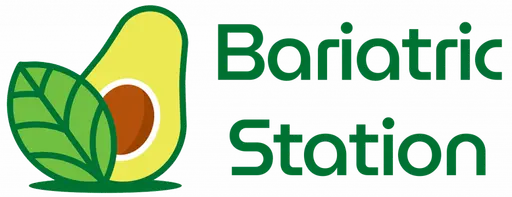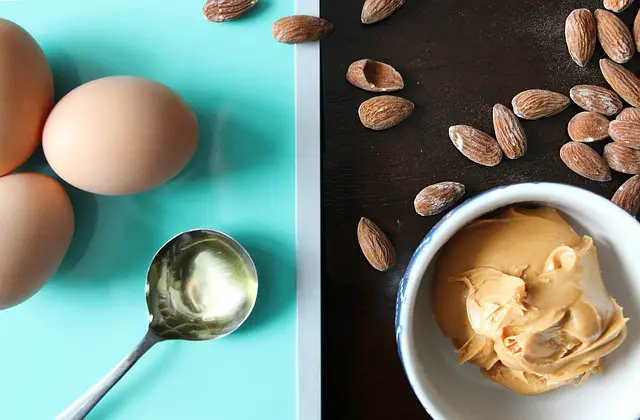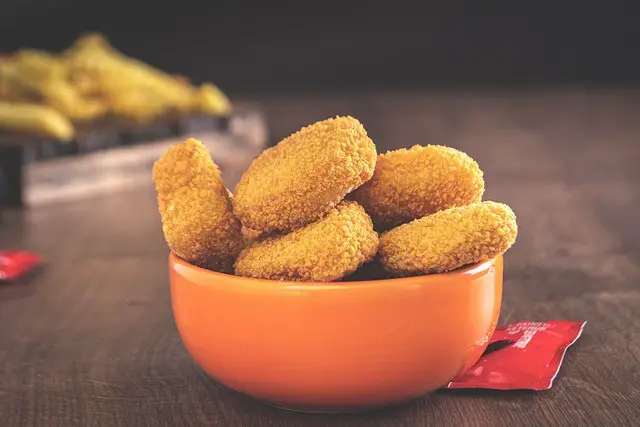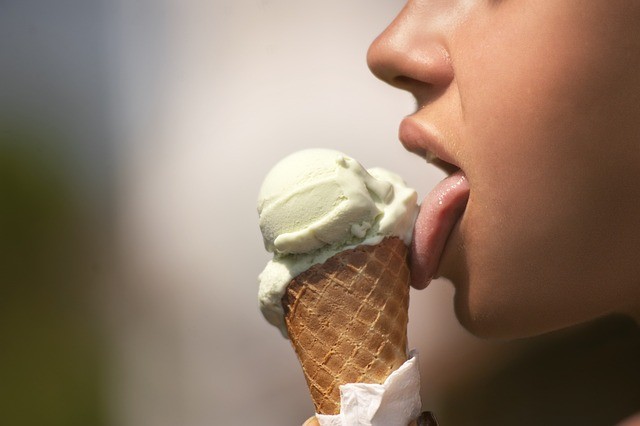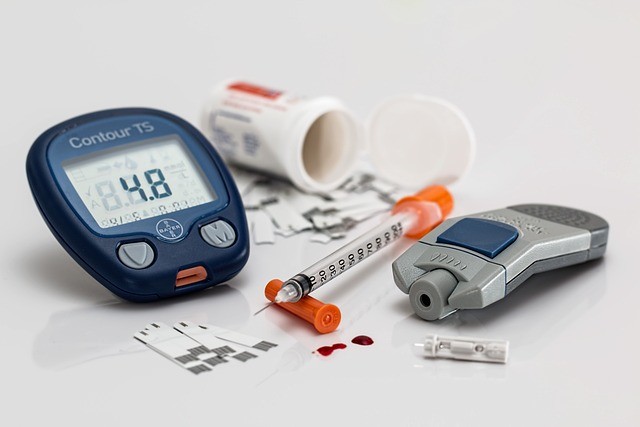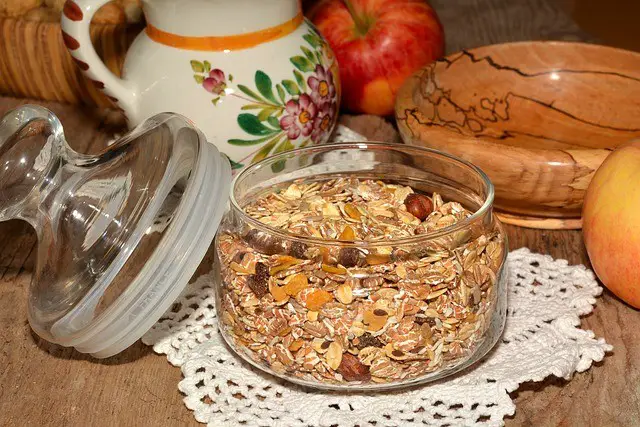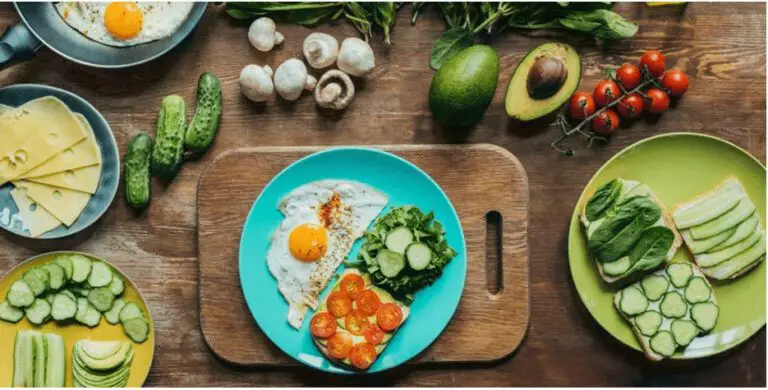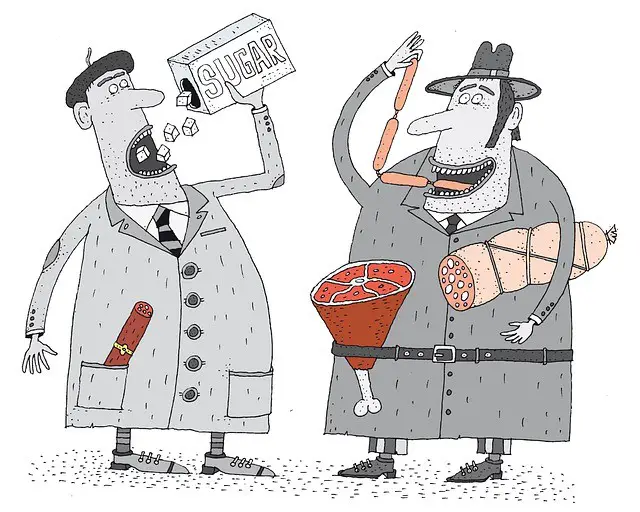Many diets have come up over the years in the hope of assisting people with losing weight. We have tried low-fat diets, low-carb diets, high-protein diets, and high-fat diets. The low-carb, high fat diet for weight loss is very beneficial, for more than just weight maintenance.
A low-carb, high-fat diet also referred to as a ketogenic diet has attracted a huge following because of its health benefits. Fats have had a bad picture in the past, but new research has shown that they are not the villains we painted them to be.
In this read, we will discuss the benefits and side effects of the high fat weight loss diet. I’ll give you a list of high-fat foods to consume on this diet that will not pose any threat to your heart health. In addition, I will review evidence from past research done on the effectiveness of high-fat diets for weight loss.
High Fat Weight Loss Diet
The right place to start talking about this diet is what exactly it is, macronutrient distribution on the diet, and the science behind a high fat intake for weight loss.
High Fat Diet for Weight Loss
The American diet is characterized by high-carb intake and consumption of unhealthy fats. These diets increase people’s risk of being overweight and obese, the major risk factors for chronic diseases like diabetes mellitus. For this reason, low-carb diets were introduced.
The point of these diets is to deprive your body of glucose, its primary energy source, so it can turn to fat for energy. The flaw in this plan was that the body does not enter a fat-burning state immediately, glucose and glycogen stores are depleted. And even in this state, it does not go directly to burning body fat.
In ketosis (the body’s fat-burning state), your body will start burning dietary fat before fat stores. This is where high-fat, low-carbohydrate diets come in. Lower your carb intake, and your body will use up all the glucose and glycogen it has. Once these are depleted, they will turn to proteins to make glucose through a process called gluconeogenesis.
When consuming low-fat foods on a low-carb diet, your body will lack dietary fats to metabolize energy. In this case, it will start breaking down muscle mass which is not what you need when losing weight. A high-fat, low-carb diet, however, will maintain the integrity of your muscles by providing the body with fats to metabolize. After being fat-adapted, it will automatically turn to your fat cells for energy.
There are two dietary plan options for the high-fat diet lifestyle. There’s the Atkins diet, a low-carb, high-fat eating plan. It involves 4 phases that include:
- Phase 1: Very low-carb eating limited to 20 g of carbs for the first 2 weeks.
- Phase 2: Increase carb intake by adding healthy carb sources to your diet like fruits and moderate-carb vegetables.
- Phase 3: As you approach your ideal weight, you keep raising your carb limit to more than 50 g of carbs per day.
- Phase 4: When you reach your goal weight, you are allowed to eat high-carb foods like whole grains and tubers. Although, carb intake is kept below 100 g per day.
The downside of the Atkins diet is that it allows for the consumption of pre-packaged processed foods that are packed with carbs and sugar. You are at risk of regaining the lost weight back.
The other high-fat diet is what I’d recommend. The macronutrient distribution on this high-fat, low-carb diet is as follows:
- Carb intake is restricted to 20-50 grams of carbs per day. You are required to get only 5% to 10% of your calories from carbohydrates. Considering you get 4 calories per gram of carbs and the recommended calorie intake in the standard diet is, you will be getting 100 to 200 calories from carbs a day. But remember, you need to put in mind your recommended calorie intake for weight loss when calculating carbohydrate intake. You will get your carbs on this diet from non-starchy vegetables. A point to note is other than tracking the calories of carbohydrates you consume; you need to count the carbs consumed. This is where total carbs vs net carbs come in. Total carbs refer to all the carbohydrates in food including starch, sugars, dietary fiber, and sugar alcohols. Net carbs, on the other hand, account for only digestible and absorbable carbs. You will get the number of net carbs consumed by subtracting the amount of the non-digestible carbs, fiber, from the total carbs in your food. This means consumption of fiber-rich carbohydrates does not affect your carb intake as much.
- This diet calls for 20-25% of your calories from protein intake. The keto diet is usually moderate in protein. Considering you also get 4 calories per gram of protein, and you are on a standard diet, you will get 400 to 500 calories of protein. Again, this amount can shift depending on your caloric intake recommendations for weight loss. The diet calls for the consumption of animal proteins over plant-based proteins. This is because the plant proteins are high carb and consuming them will have you exceeding your carb limit. Animal proteins are top on the grams of protein in food chart because they are complete proteins. These provide your body with amino acids it cannot produce and has to source from your diet.
- Your fat intake is essential for this diet. You will get 60-80% of your calories from fat. Assuming you are on the standard diet, and putting into consideration that you get 9 calories per gram of fat, you will be getting 1,200 to 1,600 calories from fat consumed. The calories of fat will be lower on your weight loss diet considering the calorie deficit required. For this food group, we focus more on quality over quantity. It is not more of the fat content of food, but the kind of fats it contains. However, keep in mind that too much of everything is poisonous, so don’t overdo it. Healthy fat sources contain high amounts of monounsaturated and polyunsaturated fatty acids (MUFAs and PUFAs), moderate amounts of saturated fats like stearic acid, and no trans fats. Later in this article, I will mention high-fat foods to add to your low-carb, high-fat diet.
LCHF Diet: How to Know It’s Working
The whole essence of this diet is to switch your metabolism from glucose breakdown for energy to fatty acid oxidation. Carb restriction lowers insulin levels and your fat cells stop hoarding calories. Normally too high insulin levels make your fat cells store energy. Once they drop, your brain will go for the energy in these cells for fuel and speed up your metabolism.
But how are you able to tell that all this is going on?
High Fat for Weight Loss: Signs of Ketosis
Ketosis is the process by which the body uses fatty acid oxidation for fuel. It leads to the production of ketone bodies. Once your body gets to this fat-burning state, there are signs you will see that confirm that your diet is working. Some of the symptoms are short-term and go away after your body is used to using lipids as its primary source of fuel. The following symptoms will only last the first one or two weeks on the high fat weight loss diet.
Short-term Signs of Ketosis
These symptoms are what we refer to as the keto flu. This flu is characterized by:
- Fatigue
- Headaches
- Lethargy
- Brain fogs
- Insomnia
- Stomach aches
- Carb cravings
- Muscle cramps
- Bad breath
- Dry mouth
- Decrease in performance
Once these symptoms subside, you will experience:
- Increased energy levels
- Reduced appetite and increased satiety
- More focus
- Better mental and cognitive function
- Increased blood ketone levels
- Weight loss
- Improved digestive function
You now know how to tell whether your high-fat diet is working or not and when to make the right adjustments.
What is a Low-carb, High Fat Diet Called?
The are different types of healthy low carbohydrate diets. Some examples include Paleo, Atkins diet, Dukan diet, South Beach diet, and the low-carb Mediterranean diet.
The low-carb, high-fat diet is referred to as the ketogenic diet. It is what I defined in the macronutrient distributions above. Different variations of this diet play around with the macro distributions depending on need.
The types of this high-fat diet for weight loss include:
- Standard ketogenic diet: This is characterized by consuming 70-75% of calories from fat, 15-20% from protein, and 5-10% from carb intake.
- Targeted ketogenic diet: This kind allows you to consume a higher amount of carbs to fuel your exercise. You are allowed to consume more carbs before your workout session.
- Cyclical ketogenic diet: This is an alternate feeding plan, where you switch between days of low-carb and high-carb refeeding. It usually involves following the standard keto diet for 5 days and eating high-carb foods for 2 days. I would highly recommend CKD for beginners.
- Classic ketogenic diet: It characterizes the initial keto plan designed for the treatment of epilepsy. The caloric distribution was as follows: 4% of calories from carbs, 6% from proteins, and 90% from fat.
- Dirty ketogenic diet: It is a less restrictive form of the SKD. This one focuses on meeting macro ratios. It is also called the lazy keto diet. In this one, once your macro ratios are met, you have no food restrictions even when it comes to processed foods.
- Clean ketogenic diet: This follows the rules of keto from macro ratios to which foods to eat.
The high-fat weight loss diet is the ketogenic diet. So which foods cut it on this diet?
Low Carb, High-Fat Meals
For the low-carb aspect, you will get your recommended carb allowance from non-starchy vegetables. These include green leafy veggies, cruciferous veggies, bell peppers, and green beans. But let’s tackle the high fat aspect of this diet. Why are we going for fat for weight loss?
Is A High-fat Diet Good for Weight Loss?
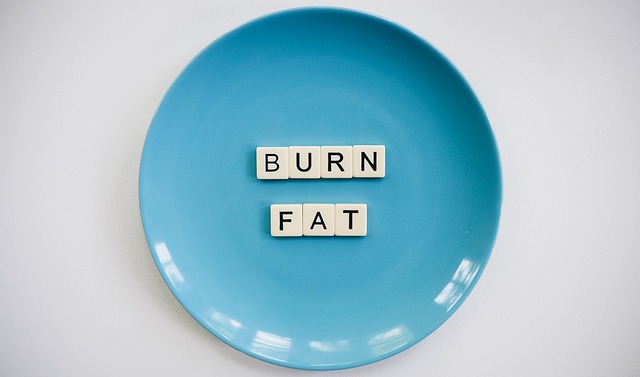
What makes fat good for weight loss over other macronutrients?
- They are the body’s secondary energy source. Your body will turn to fats for energy in the absence of glucose and glycogen.
- Promote satiety. Per gram of fat, you will get 9 calories, unlike carbs and protein which provide you with 4 calories each per gram. Simply put you need less fat to feel full. You will have to eat double the amount of carbs or protein to achieve the same satiety as eating fat. Increased satiety means less food intake.
- Lowers insulin levels which trigger fat cells to release energy. Insulin is a storage hormone. When its levels are high, fat cells hoard calories and preserve energy. Fat lowers digestion and absorption of glucose which means lower insulin levels. This equals a higher metabolic rate and loss of weight.
- Fats are delicious. This macro is packed with flavors that promote the feeling of fullness. For this reason, cravings are kept at bay, and binge eating tendencies are reduced.
A high-fat diet is good for shedding a few pounds, but it all depends on the quality of fats you are consuming. There are good fats and bad fats. Good fats are those that will not affect your general health while bad fats have a negative impact on your health. Let’s find out the kind of fat in your food that is good for you and which ones you should avoid.
Good Fats in Food
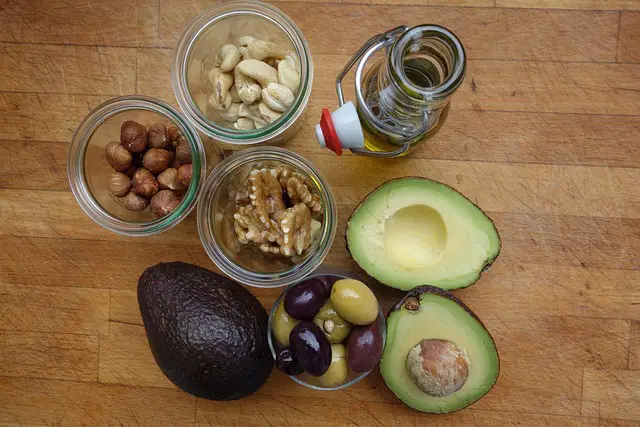
The good fats in your foods include:
- Unsaturated fats: These can either be monounsaturated (MUFAs) or polyunsaturated fatty acids (PUFAs). MUFAs are liquid at room temperature and are found in canola oils, olive oil, nut oils, and avocado oils. Oils rich in PUFAs include vegetable oils, seed oils, fatty fish, and some nut oils. These stay liquid at both room and refrigerated temperatures. According to the American Heart Association, you should get up to 10% of your calories from PUFAs and a maximum of 15% of your calories from MUFAs.
- Saturated fats: These have had a bad press, but recent research suggests that moderate consumption of saturated fats can be good for your heart health. This kind tends to remain solid at room temperature and they include butter, lard, and coconut oils. The AHA recommends getting less than 10% of calories from this type of fat. In moderation, SFA can be good for you.
- Essential fats: Like essential proteins, these fatty acids have to be gotten from the diet since your body cannot produce them on its own. Omega-3 fatty acids and omega-6 are EFAs you need from your diet. Omega-3-rich foods include fatty fish and shellfish. Omega-6-rich foods include grains, seeds, and some animal-based protein like chicken.
Bad Fats in Food
Fats you should avoid in food include:
- Trans fats: These are the kinds of fats that increase your risk of heart disease. They are found in processed foods, junk foods, baked foods, vegetable shortenings, snacks, candies, and partially hydrogenated vegetable oils.
- Excess saturated fat: Exceeding your recommended intake of SFA makes it bad for you. Pay attention to the portion sizes of these foods.
You know a high-fat diet is good for you and you do know which fats to go for in your food.
High-Fat Diet Menu
Which foods are considered high in fats? The following high fat food list should help you choose what to eat on your high fat diet for weight loss.
High-fat Foods
These foods include:
- Fatty fish
- Eggs
- Nuts and seeds
- High-fat dairy products
- Avocados
- Healthy oils like olive oil and coconut oil
Here are some foods that are top of the list for their high-fat content.
Whole Eggs
Whole eggs are high in fat and cholesterol levels. Many people get worried about cholesterol levels in eggs, considering one egg contains 186 mg of cholesterol.
Recent research suggests that consuming eggs does not affect cholesterol levels. This can be attributed to choline in egg yolk, a cholesterol-mobilizing nutrient.
In addition to this, eggs are rich in lutein and zeaxanthin, antioxidants that help lower oxidative cholesterol. These phytonutrients also improve lipid profile by increasing levels of the low-density lipoproteins (large buoyant LDL) that do not deposit on arterial walls.
Eggs are an excellent source of vitamin K2 which mobilizes calcium to the bones instead of the walls of the arteries. This reduces the risk of thinning of arteries which leads to high blood pressure.
According to the USDA, one egg contains 4.9 g of total lipids. You don’t have to worry about the high-fat content because this food is healthy for you. This is why keto egg fasts are recommended as a short-term dietary modification to break a weight loss plateau.
Full Fat Greek Yogurt
One of the best keto yogurt options is Greek yogurt. Greek yogurt is fermented with yeast which consumes its sugar explaining its low sugar content.
Why does this food stand out on a high-fat diet? It is rich in probiotics that promote a healthy gut. A healthy gut can be helpful for weight management.
Why not go for reduced-fat or non-fat yogurt? Research has shown that high-fat dairy products have no negative effects on your health. A 100 g serving of unsweetened Greek yogurt provides you with 4.39 g of total lipids.
Chia Seeds
I know you’ve never thought of chia seeds as a way to up your fat intake. You’d be surprised to know that a tablespoon of these seeds contains 3.7 g of fat. Although this serving size contains 5.1 grams of carbs, 4.1 grams of these are fiber. So technically, most of the calories in this food are from fat.
What makes these particular seeds a good addition to your high fat weight loss diet? The main fats in them are Alpha-linolenic acid, a type of omega-3 fatty acid you can only get from your diet. The functions of this fatty acid include lowering the risks of heart disease, reducing serum triglyceride levels, and reducing blood clots. They are also known for their blood pressure-lowering properties.
Olive Oil
Considered the start of the fats and oil world, you can never go wrong with extra-virgin olive oil in your diet. The oil is rich in MUFA oleic acid. It is required for lowering cholesterol in the body by blocking the transport of this fat in the small intestine. This is achieved by lowering the production of cholesterol receptors in your intestines.
Now you know why olive oil is a major ingredient in the Mediterranean lifestyle.
Fatty Fish
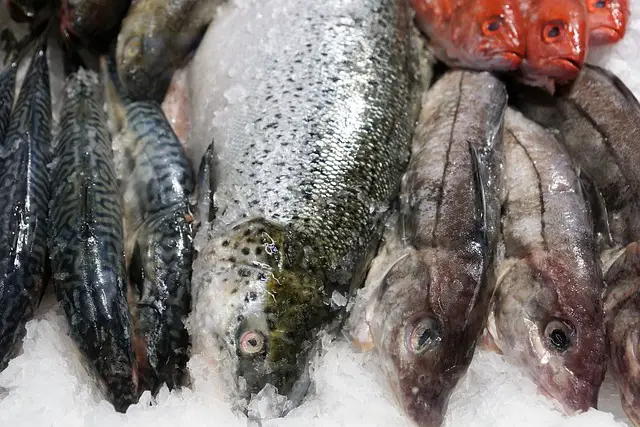
Fatty fish are an excellent source of animal-based protein. Trying to kill two birds with one stone, consider them as a fat source in your keto diet. Some fatty fish include salmon, anchovies, black cod, mackerel, and tuna.
Most people wonder, is tuna high in cholesterol? Can you eat fatty fish when you’re watching your cholesterol?
Yes, tuna is high in cholesterol, and you can eat fatty fish when watching your cholesterol. These fish are rich in omega-3 fatty acids that have been shown to lower serum lipid levels and increase levels of high-density lipoprotein (good cholesterol). Tuna contains a lower cholesterol content than other fatty fish.
My advice, go for fresh fish over the canned variety. Canned fish is higher in saturated fats than the fresh kind. These are also higher in calories and sodium levels.
Aim to eat one or two servings of fatty fish in a week to meet your recommended omega-3 allowance.
Nuts
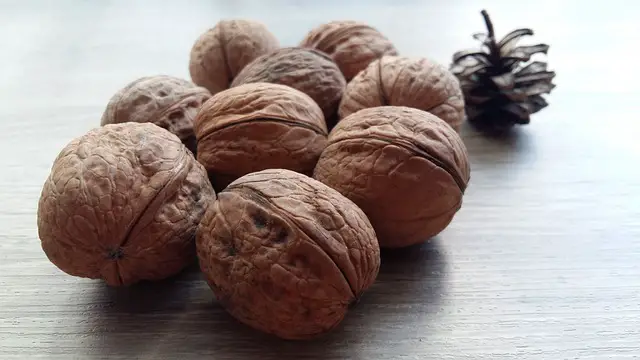
When asked, I always say go nuts! This works for anyone without a nut allergy of course! Whether it is almonds, macadamia nuts, cashews, pistachios, or Brazil nuts, these are excellent sources of healthy fats.
Nuts are rich in magnesium which is involved in energy conversion. They are also rich in fiber that increases your sense of fullness reducing food intake. A few studies have proven that people who consume nuts have reduced risks of obesity and cardiovascular diseases.
It is recommended to consume an ounce or two of nuts a day. This won’t be difficult considering how versatile they are!
Cheeses
Two high-fat dairy products, jackpot! First, considering how many carbs are in a slice of cheese, you shouldn’t be shocked they count as keto foods.
The following are low-carb, high fat cheeses you can eat on your weight-loss diet:
- Mozzarella cheese
- Parmesan cheese
- Feta cheese
- Blue cheese
- Cream cheese
- Cheddar cheese
- Goat cheese
- Gouda
Avoid low-fat, American, canned, and ricotta cheeses. Cottage cheese is not keto as well.
Dark Chocolate
When it comes to dark chocolate cholesterol, all you need to know is this food doesn’t have a negative impact on your lipid profile.
A 100 g serving of dark chocolate (70-85% of cocoa solid) will give you 3 mg of cholesterol. This chocolate is rich in saturated fats, a third of which is stearic acid.
Stearic acid has a neutral effect on cholesterol, meaning it neither raises nor lowers cholesterol. Researchers have found that stearic acid may be as effective as oleic acid in lowering cholesterol.
Why healthcare providers advocate for dark chocolate intake due to its antioxidant properties. It is rich in epicatechin and resveratrol which possess anti-aging properties.
How much dark chocolate per day do you need to improve your lipid profile? Two servings a week of this chocolate plus a third cup of almonds can achieve a significant reduction in serum lipid concentration.
However, don’t overdo your intake! More dark chocolate does not have additional lipid-lowering properties.
Avocado
Besides berries, avocados are the other fruit allowed on a low-carb diet. Unlike other fruits that are high in carbs and sugars, this one is packed with fats.
Looking into its potential benefits, studies have shown that eating an avocado a day improves inflammatory markers and lipid profile. The fruit is also rich in fiber which promotes digestive health.
I love avocados because of how many things you can do with them. You are not limited to juicing only!
You now know the top fatty foods to include in your diet. But how do you add these to your high fat weight loss diet without packing on calories and extra pounds?
How to Eat a High-Fat Diet
Follow the following tips to ensure your calories are in check while eating high-fat:
- Go for fresh foods over canned or processed alternatives. These contain good fat and low to moderate saturated fat content.
- Cook using coconut oil over partially hydrogenated vegetable oils. The latter are high in trans fats with artery-inflaming properties. Coconut oil contains good kinds of saturated fats in moderate amounts.
- Have a serving or two per week of fatty fish.
- Aim to increase the fat content of salads by adding a handful of nuts or dressing with olive oil.
- Garnish with high-fat foods like cheeses.
- Use nut butter as spreads over margarine.
- Use different kinds of fats for different flavors while cooking.
- Eat whole full-fat products rather than low-fat varieties.
- Pick high-fat foods for snacking e.g., nuts and seeds.
- Introduce fats into your coffee or tea. Coconut oil or melted butter is easy to incorporate and adds flavor to your beverage without compromising carb intake.
What are the Side Effects of a High Fat Diet?
Besides the short-term symptoms of the keto flu, there are other potential side effects of the high-fat diet for weight loss. These include:
Stress on the Kidneys
The keto diet depends on animal-based protein sources for fats and proteins. The issue with excess consumption of these foods is they increase blood and urine acidity, which increases calcium excretion. In addition, eating keto lowers citrate levels in the body. Citrates bind calcium in the body and their deficiency leads to the development of kidney stones.
Individuals suffering from chronic kidney disease shouldn’t follow the keto diet because compromised kidneys may fail to maintain pH in the body.
Nutrient Deficiencies
You can’t have whole grains, legumes, and some fruits on keto, which means you are being deprived of the nutrients these foods provide. The most common nutrient deficiencies include magnesium and folate. To lower the risks of developing, consider supplementing your micronutrients.
You could also suffer from electrolyte imbalances on this diet. This is because of excess water loss and lower insulin levels. Electrolyte supplementation and consuming enough sea salt can help curb this.
It is not all bad following a high fat diet. There are several health benefits associated with limiting carbs and increasing fat intake.
Health Benefits of High Fat Diet
- Weight management
- Blood sugar regulation
- Promotes brain and cognitive function
- Improves heart health
- Helps regulate cholesterol and lipid levels
- Antioxidative and anti-inflammatory properties
- Helps manage symptoms of polycystic ovarian syndrome (PCOS)
- Helps prevent some cancers and their disease progression
- Can be good for your skin
Which is Worse Fats or Carbs?
According to research, you are better off consuming more fat than carbs. A prospective cohort study was done to examine the association of fat and carb intake with cardiovascular disease and mortality in some countries.
Higher carb intake was associated with an increase in total mortality. Intake of total fat and each type of fat was associated with lower risks of total mortality. A higher saturated fat intake was associated with lower risks of stroke. Intake of total, unsaturated, and saturated fat was not significantly associated with the risk of myocardial infarction and cardiovascular disease mortality.
What was the interpretation of these findings? A higher fat intake is better than a higher carb intake. A high carbohydrate diet would increase your risk of total mortality. Fats are not associated with cardiovascular disease and saturated fats had an inverse association with stroke.
Final Thoughts
The high fat weight loss diet is a healthy choice. It is better to up your fat intake than your carb intake. Consume healthy fats to ensure you reap the benefits of this diet. I would advise speaking to a health coach so you can always have the right information throughout your diet journey.
Considering the high fat weight loss diet, tell us what influenced this decision in the comments below.
